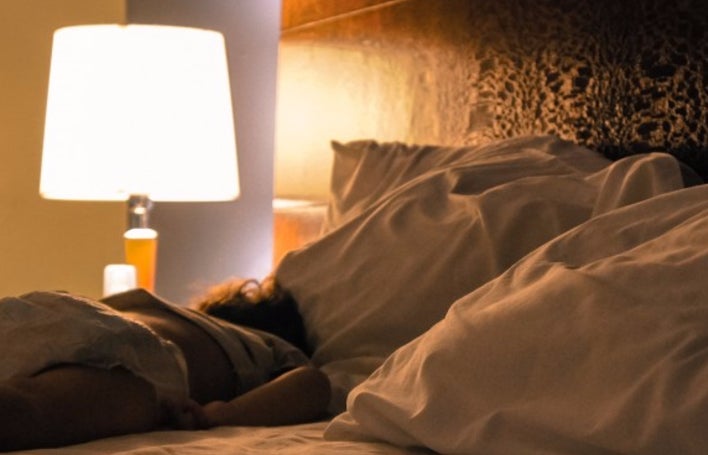
EFT Tapping and Sleepytime
My first introduction to EFT (Emotional Freedom Technique) tapping was in early October, 2001. A friend had come from California to teach a wellness retreat in metro New York City area.
The biggest obstacle for the women at the retreat was not the willpower to get healthier, nor was it holding a vision of our future selves. What overwhelmed us all was clearing the trauma from less than a month before. We could, after all, still see the plume from the World Trade Towers from the retreat location and there may have even been a hint of the acrid smell of the devastation that was more real than imagined.
Someone at the retreat was familiar with EFT/Tapping and taught it to us. This was at a time when Gary Craig was sharing his knowledge on emofree.org – much of it free. EFT had been an effective treatment for healing combat veterans of Post-Traumatic Stress. Tapping has since grown exponentially in popularity. An outline of its history can be found here .
As a parent, I’ve found tapping helpful in everything from helping my daughter overcome a fear of spiders so she could enjoy summer camp, to days when I was overwhelmed to the point of analysis paralysis. Tapping is up there with meditation, eating balanced meals, and movement on my list of healthful practices.
Tapping in theory and practice is simple: Instead of avoiding issues and concerns, you embrace them with compassion while physically using your fingers to tap on the energy meridians in the body. More background and resources for exactly where to tap and what to say can be found on the EmoFree site and at Advancing EFT International here .
Now about tapping for sleep....
One of the more common problems I hear from adults when it comes to getting to sleep is what EFT expert Georgina Noel describes as “busy brain syndrome”. We’ve all experienced it. We haven’t cleared enough space in our day for a peaceful, intentional bedtime ritual that helps us transition to sleep. Or we wake up in the middle of the night after one of our REM (rapid eye movement) cycles and can’t get back to sleep because of our mind is going over an event from the day.
Georgina Noel doesn’t have many clients who come to her for insomnia. One of her fields of expertise is weight loss. She offers a free three-day tapping challenge for emotional eating and weight loss here.
However, while working with people on weight loss, Georgina has discovered that sleeping well is a happy side effect of the work she does with her clients. Sometimes a person doesn’t even realize sleep was an issue until they’ve been tapping for a few days and begin to experience better sleep.
Why does tapping work?
“The reason it works is when you’re tapping on the points, a physical reaction happens in the body – it lowers your cortisol levels. That means you have less stress hormones; you’re more relaxed. Tapping targets our biochemistry and physical responses as well as our emotional, and psychological wellbeing.“ Georgina Noel, EFT expert
In a nutshell: Tapping reduces cortisol levels. High cortisol accompanies stress and – you guessed it – sleep. There are studies that back that up. Here’s one.
How to incorporate EFT Tapping for sleep
“As part of a bedtime routine, at the end of the day what I recommend for people is to scan through the day. Anything that pops up and triggers you in any way - even if you feel you’ve ‘dealt with it’ – the event can still trigger physical and emotional responses which in turn trigger stress hormone production in the body. Tap through the EFT points and breathe until you don’t have any emotional response.” Georgina Noel
For an overview of tapping points, this video is a helpful reference.
What about waking up in the middle of the night?
We all have those moments when we obsess about how much sleep we’re missing. Experts suggest we get out of bed rather than toss and turn so that the bed is a positive cue that it’s time to sleep.
When this occurs, just tap. You don’t have to know what you’re tapping for, you can simply breathe and tap. If you’re concerned that tapping will wake you up even more because it’s too active, you can imagine you’re tapping. Either visualize it or - if you’re a kinesthetic person, imagine how it feels to tap on the sequence of points.
What about EFT Tapping for children and sleep?
Children can be resistant to a practice like tapping, particularly very young children. During tuck-in time, a caregiver can take a favorite stuffed animal or toy, and go through the tapping points. Take a teddy bear, for example, and ask “How was Teddy’s day today?” And you can tap on Teddy. Using stickers for the tapping points will help children intuitively learn this powerful healing practice.
Every health practice, including tapping, benefits from planning. The Bedtime Blueprint is free and can help you plan your days for restful nights. Get it here.
